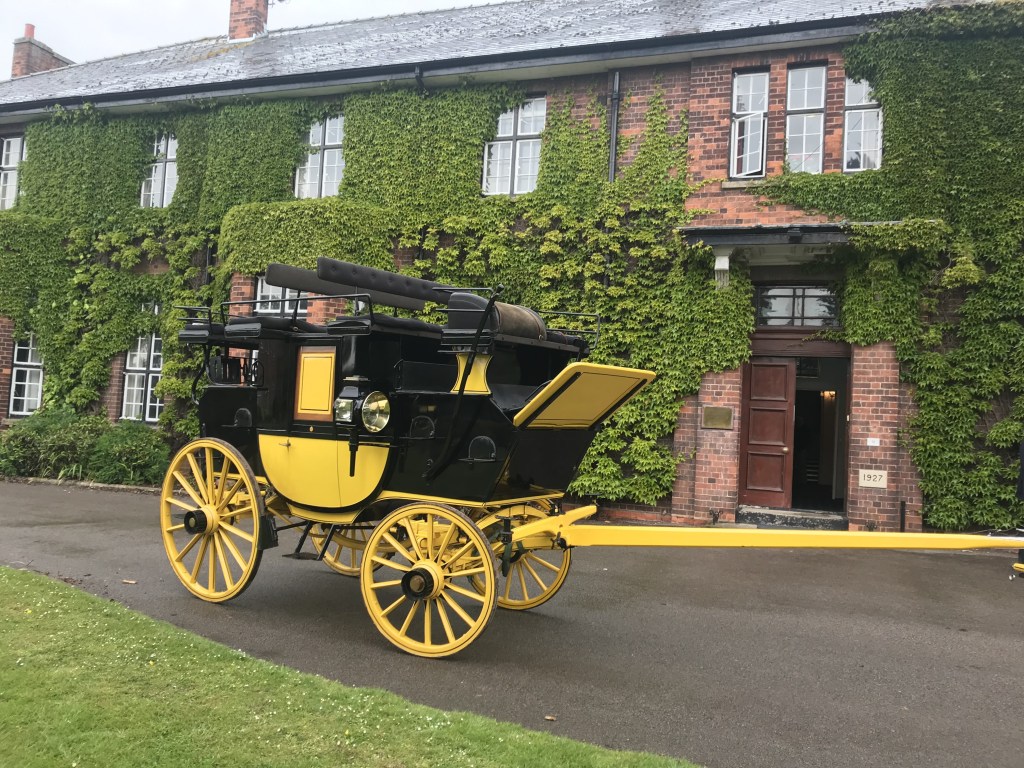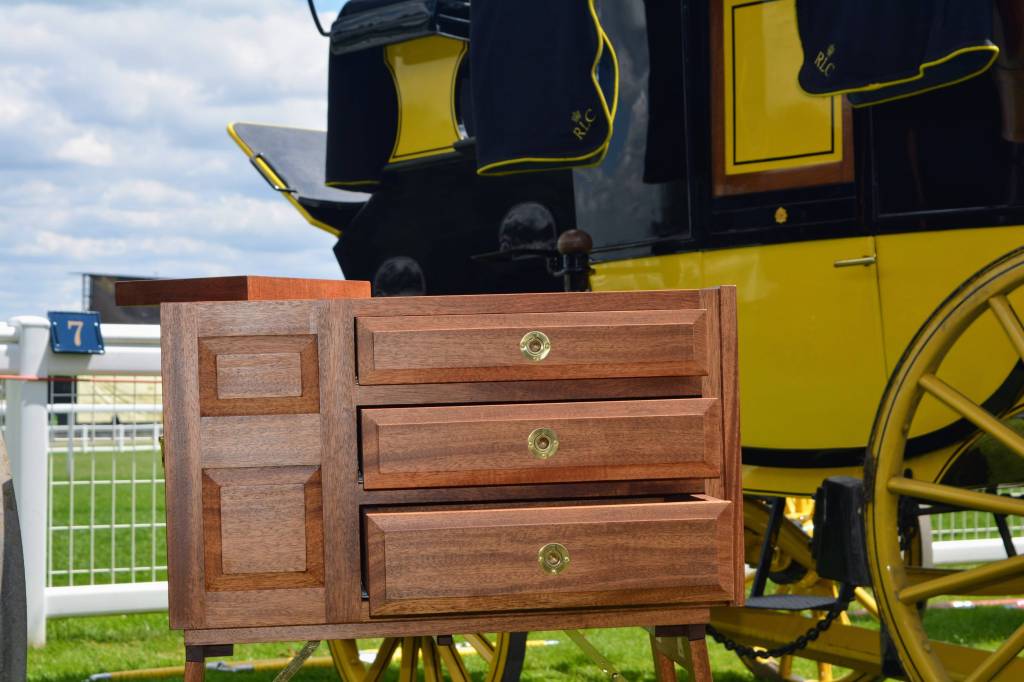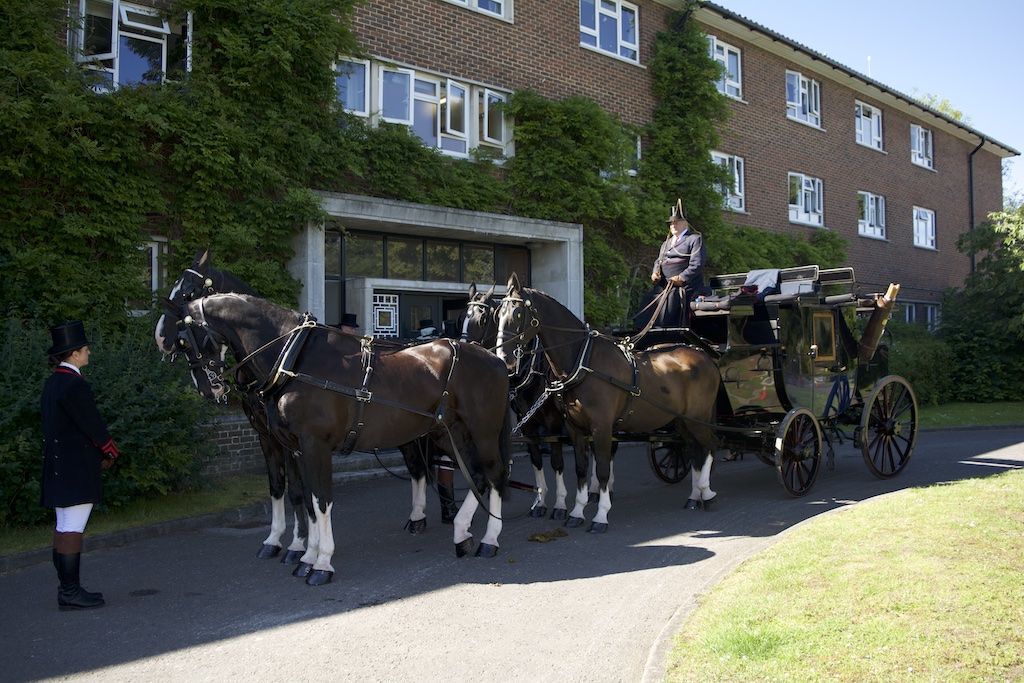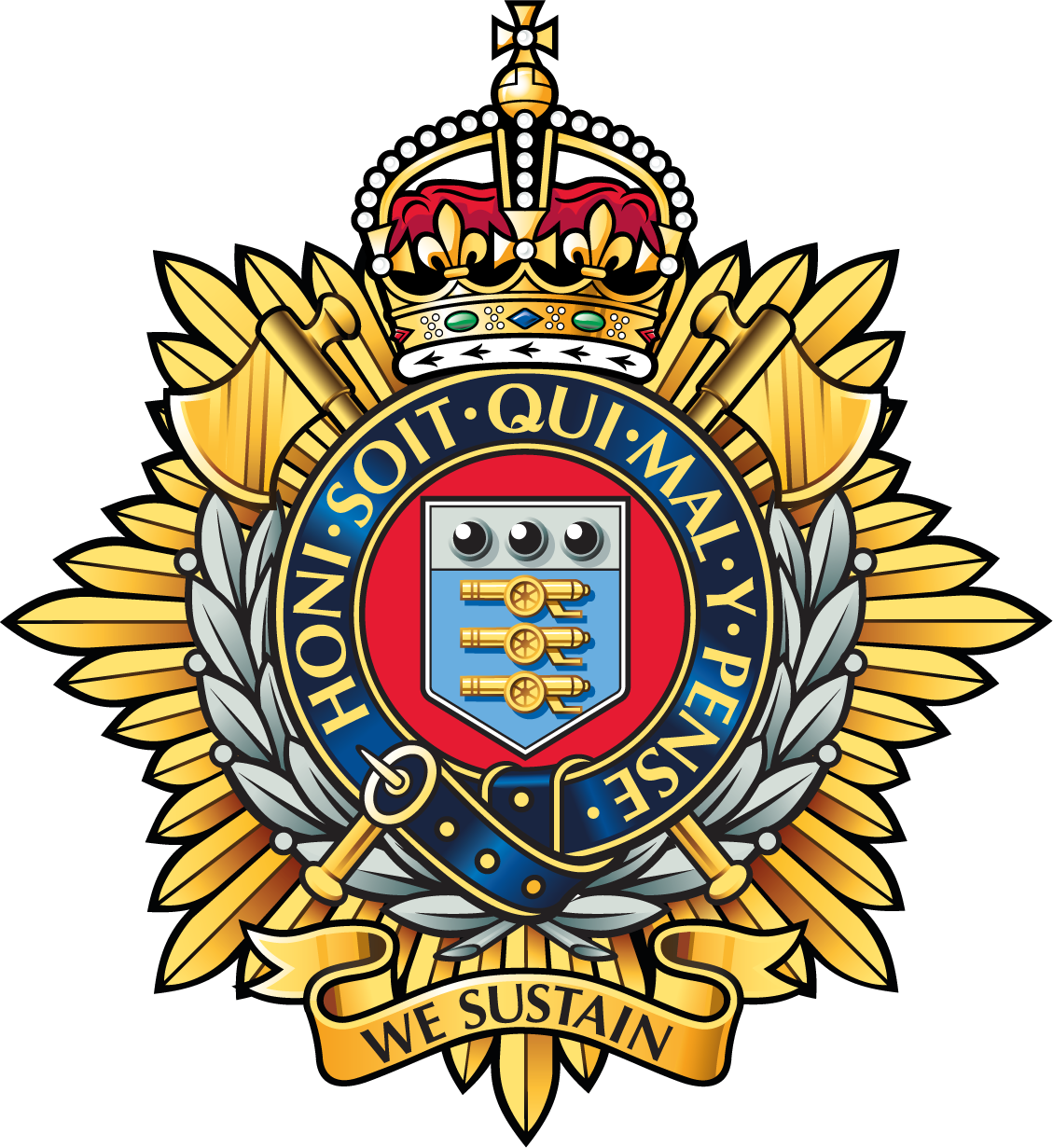General Service Wagon




The GS wagon was the culmination of many years research and development, a versatile vehicle with which a pair of horses could pull 1.5 tonnes easily on good roads, but which needed up to 4 pairs or more across soft ground. The Mk X GS wagon was the first truly standardised military transport vehicle b whether made in Woolwich, Swindon, Australia or Canada, all parts were interchangeable and easily repaired in the field and, by minimal use of steel in the composite construction, the unladen weight was kept to 15 cwt about 750 kg – so the most that a pair of horses would be expected to draw would be a little over 2 tons, a reasonable load on a level road. An official edict made it a punishable offence for unauthorised personnel to ride in a transport vehicle, on the premise that the horses had enough to pull without the additional weight of idle soldiers – an edict most commonly ignored by Australian troops. On the Western Front and in other theatres, until MT was available, GS wagons would move stores from the railheads to the DivisionalDump, whence Unit Transport would resupply the Brigades 2nd echelon. To avoid congestion and delays loaded wagons would use the paved roads and empty wagons would use the adjacent fields, with much movement at night.
Mark II Horse Ambulance


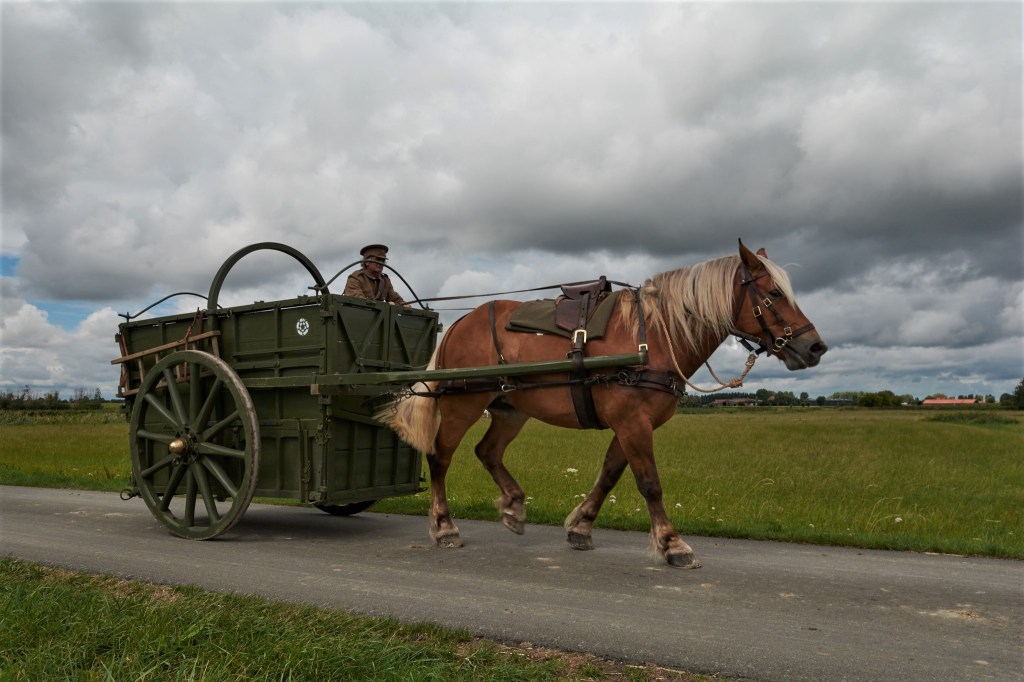
Lessons had been learned from the South African wars and by 1914 veterinary care was now efficient and effective. Divisional transport assets each had a veterinary section overseeing animal health and welfare, capable of treating minor injuries and equipped with an equine ambulance. Any horse needing more advanced care could be evacuated by this means to a Veterinary hospital behind the lines. The 1917 Mk II Lingfield Pattern Horse Ambulance in the RLC collection was in service with the Royal Army Veterinary Corps in Aldershot Garrison until the 1970s. This is a reversible vehicle – the shafts can be taken out and inserted the other end, allowing for ease of loading. The strange arch over the top is actually the axle and provides a sturdy support to support an injured horse when necessary.
Officers Mess Cart

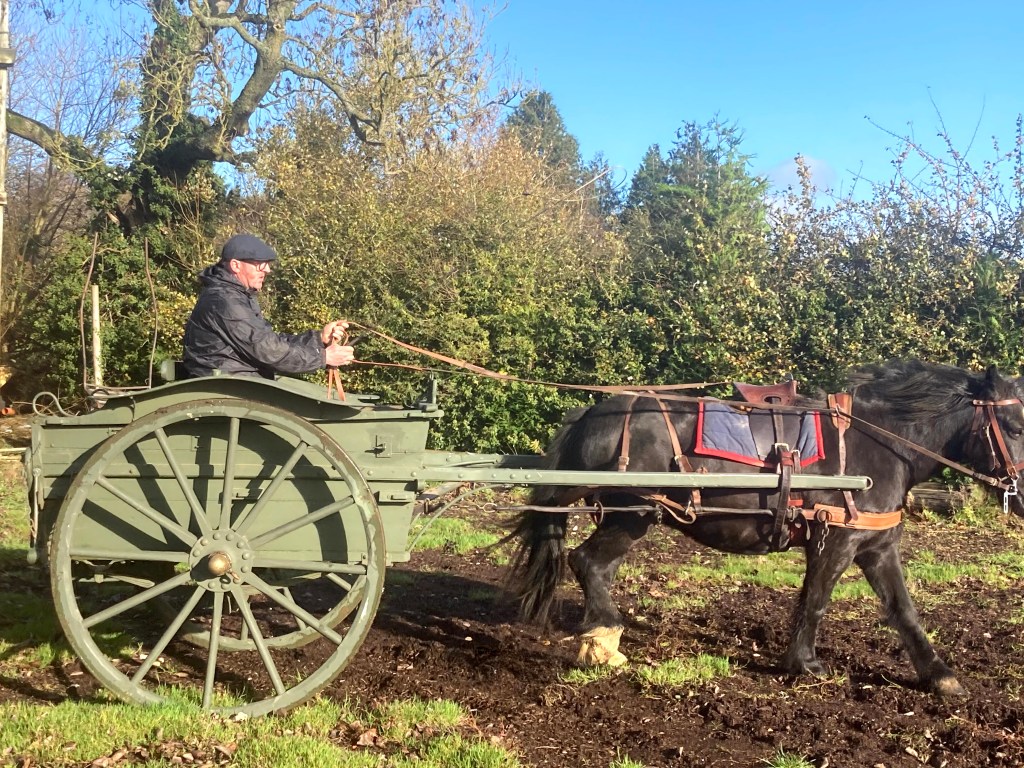
It is often said that an army marches on its stomach, and accordingly each battalion would have 5 Mess Carts to carry rations and cooking utensils. These light two-wheeled vehicles, which were popular after the war as market carts and floats, are unusual, for a military vehicle, in having springs, almost certainly for the benefit of the eggs, rather than of the driver. A canvas tilt could be fitted which gave some protection to the rations. The RLC Mess Cart was built in 1918 and is awaiting some further restoration, including the replacement of its canvas tilt, but after a hundred years is still used regularly for driver training and displays at historical events.
Limbered Wagon with Caisson


A limbered wagon is a lightweight articulated vehicle designed for off-road use over uneven ground – essentially two carts linked by a short pole or perch. Each part, fore and hind can carry about half a ton and could, if necessary, be used separately as a single unit. Normally drawn by two horses, the driver seated on the nearside horse or mule, additional pairs could be added when the going got tough. Although it could not carry the load that a GS wagon can, it is much more manoeuvrable and became the preferred vehicle for mobile units, with several variants for artillery and small-arms ammunition, engineer tools etc. and general stores. Each battery, infantry battalion, Royal Engineers and Machine Gun Corps Company would have a number of specialised limbered wagons. Most were unsprung, but some earlier models with provision for carrying personnel had springs to ease the ride and draught. These were found liable to break with heavy use and all later versions were unsprung.
Water Cart

These were used to bring water forward to the troops and livestock, being filled from whatever sources were available. Some were even fitted with basic filtration pumps.
Park Drags
Sir Reginald Kerr Coach & the Regimental Coach
